- Home
- Various Authors
Purakau Page 2
Purakau Read online
Page 2
Then there’s Apirana Taylor who, in ‘Hine Tai’, aces a story that is deceptively simple but, as in all of Taylor’s work, watch out for those subtexts.
These are quality stories in their own right, cleverly juxtaposing their Māori literary qualities of ihi, mana, wehi and aroha within the expected standards of the very best of postmodern literature. They counterpoint the mythical world with the most challenging of our contemporary realities, cumulatively underscoring this book with a powerful social commentary. Among them is Kelly Joseph’s unforgettable and searing ‘Hinepūkohurangi and Uenuku’, Briar Grace-Smith’s ‘Born. Still.’ and Whiti Hereaka’s ‘Papatūānuku’ imagining the goddess as a mother bringing up her sons in a setting that reflects the reality of any mum trying to get by without a man in the house. These three narratives reverse the usual trope where often it’s the story of the hero that gets the space and the woman’s story gets sidelined.
The kanohi ki te kanohi reflections of reality are not surprising but we hadn’t expected them to be so evident in a book on mythology. It is perhaps an indication of how integral the myths are to our lives that they can be both otherworldly while also being so easily grounded in the everyday. If you think the humans are the heroes here, however, you need only read Frazer Rangihuna’s totally fabulous ‘Īhe & Her’ to get a complex reading that gives as much ambiguous mana to her as to him.
And then there’s Nic Low’s ‘Te Ara Poutini’ and David Geary’s ‘Rarohenga and the Reformation’. Both will resonate with sci-fi, fantasy and graphic novel aficionados, as well as addicts of pop culture from King Kong to Godzilla, from Fritz Lang’s Metropolis to Ridley Scott’s and Denis Villeneuve’s Blade Runner and Blade Runner 2045. Low’s dazzling narrative is a Māori origin story, Kāi Tahu to boot, that will remind some of the Marvel Cinematic Universe — except that it’s the Māori literary equivalent. And there’s only one way to describe Geary’s astonishing state-of-the-art story: it’s a mutant work, a mindmeld. Both take Māori fiction ‘somewhere else’ and are worthy entrants to any sci-fi hall of fame. We might add Briar Grace-Smith’s story, with its apocalyptic setting, to the list also.
4.
While faithful to their inheritance, the writers in Pūrākau have shaped the material in their own way and told the stories in their own distinctive manner. A few of the contemporary versions have been previously published and others have been written especially for this collection. Some of the origin stories may not be so well known, so the writers have provided notes on them that can be found in their biographies at the end of the book.
Finally, we ask you to imagine the book as a tokotoko, as conceived by James Ormsby in his superb cover design.
The tokotoko is the symbol of the storyteller. The tokotoko also evokes the pou that Tāne might have used to separate his parents. James has pictorialised the carved ceremonial walking stick with the myths spiralling down it.
Everything comes from the Creation, so that is at the top, in the handle: Te Pō (Kore), the separation, Hineahuone and Hinetītama stories leading to Tāne’s staff. Here are grouped the thrilling narratives of the world spawned by Tāne and opened up with his brothers (mountains, forests, seas, rivers and so on). Next come the stories of the ancestors of Hawaiki: Māui, Tāwhaki and other heroes prior to the great sailings of legendary canoes southward to Aotearoa. Here follow the stories of New Zealand where a people — our forebears — lived not just with gods and monsters but also in a landscape, seascape and skyscape of incredible diversity and potency.
Finally, at the bottom of the tokotoko are stories of Rarohenga, a place famed for arts and culture.
We hand the tokotoko to you to grasp in your strong hands. To gain strength and inspiration from. To wield as a staff, a wayfinder, a symbol of who we are.
Carry it on into the future to show the next generation who they can be.
Prologue
BY WHITI HEREAKA
This is where we start. Let it be blank. Blank is different from nothing. Nothing suggests, well, nothing. No. Thing. But blank is possibility — it may be filled, it may change, or it may remain. Blank.
Listen closely to the blank, the black, the dark. Let it invade you, colonise you, assimilate to it. This world is dark and all that there is, is darkness: a black void blankness. It is everything. It is Te Kore.
Te Kore, endless Te Kore, the void that stretches forever because there are no boundaries, no time. There is just Te Kore.
Te Kore, endless Te Kore. The void that has no substance. We cannot perceive it. We do not exist; there is just Te Kore.
Te Kore, endless Te Kore. The beginning and the end. All the things that have been and will be, but cannot manifest in …
Te Kore, endless Te Kore …
… everything, every possible thing, is enfolded together so very tightly that enormous heat is generated. It is the heat of creation, the blank feeling its potential.
And in the infinite void of Te Kore there is a hum, a hum of recognition: a prediction of change. We have started something. It is a beginning and in less than a second everything expands into …
Te Pō.
The darkness at last a presence, there is no longer an empty void. There is the night that stretches on.
Te Pō.
And in the darkness, the hum grows stronger. It is the hum of many voices, of infinite voices. It is all that has been, that will be, finding its form. Finding its will to be. Particles combine and divide, the ripples of their coupling and divorce spread out and become great waves. Everything has changed.
Te Pō.
The darkness envelops. It invades. It is you and us and we are darkness.
Te Pō.
The darkness is complete, oppressive. It defines and shapes our form. It pushes down, and we push back.
Te Pō.
The darkness is our comfort, yet we continue to repulse it. The darkness that had defined our forms has been replaced with space.
Te Pō.
The darkness is now an absence of light. We have perceived this. Our eyes have opened.
Te Pō.
And in the darkness, we listen for the hum. It is both within us and without us.
Te Pō.
The darkness is a womb, it has nurtured us but we cannot stay within its confines forever.
Te Pō.
And in the darkness, we realise that we are not alone. We are many who dwell in the darkness of …
Te Pō.
The darkness, O the darkness that has nurtured us, that has oppressed us and defined us. The darkness that is us, must inevitably arc into light.
Ki te whaiao, ki te ao mārama.
All that was held in Te Kore, all that has expanded into Te Pō, is but a pinprick of light. It is the seed of potential. It is minute, this particle of light. It is tempting to say insignificant; but because it holds our attention it is significant — we’ve imbued it with importance.
Watch as it continues to grow: the heat and light increase at a rate impossible for us to fathom. To our slow senses it is as if we are witnessing a great explosion. One moment we can hardly see the light, the next we are surrounded by it.
Thus, this tiny speck has become the centre.
Let us meet here at the centre. The centre of all that is known, all that will be. We will create a world here from a few words, we will make a place where we will be comfortable.
Let us first build a whare where we can share our stories. A whare tapere: a house of storytelling and games. A pātaka kōrero: a storehouse of language. Dig foundations in the light, holes for posts: four. Our whare will be a simple rectangular shape; symmetry soothes and pleases. From afar, our whare shines in the blank: it is a tiny speck in the great abyss of Te Pō. It carries us all. It is so small in the vastness, so vulnerable. How is it not crushed by the black? Be comforted by the thought that eventually night arcs into day.
We must continue. Walls. Plain for now, but by the end of our telling they will be carved by words an
d deeds — life, if you’d call it that, frozen in the moment. Past, present, future simultaneous. As it is, as it should be.
Below is the blank, the black so vast and unlimited that your head spins with vertigo. A floor, then, is a necessity. Let us throw a mat on the floor. It’s finely woven from flax fibre. The warp and the weft are tight, so that none of the blank shows through the minute holes, the pinpricks, the specks. Not a particle of blank shows through. The floor supports and yields. It is comfortable sitting here; perhaps even lying here, letting our words lull you to sleep.
Above are ridgepole and rafters: the backbone and ribs of the whare that envelops us. Do you imagine yourself the heart? Keeping the rhythm of the place, letting the whare live? The kōwhaiwhai patterns have yet to be painted on the rafters and ridge — they too are blank; waiting for their story to begin.
What more do you need to be comfortable? A roof overhead, thatched as they were in old times; a window to let in some air; a door so that you can leave this place when it is time. Across the window we will place a sliding panel, so that we might shut out the world if we choose to. We will borrow it from a whare carved by expert hands long ago, or, perhaps, from this point of time, that whare has yet to be built. Perhaps it is our whare that will inspire the carver: his dreams are of our pare, lintel and our door. It does not matter that he died long before you were born. Our whare exists out of time.
The whare, now whole, must be blessed so that we may dwell together. We take water into our mouths, let it drip from tongue to hand and cast the drops into the corners. The water both cleanses and nourishes the seeds of potential here — we stand at the beginning and the end of a journey. We open a path so that our words might be fruitful, so that we may hear them and be satiated. We welcome you to this place that we have created, we welcome those whose lives we will invoke here, or at least, the parts of their lives that we have glimpsed.
Let this place be filled with the things that we will need for the telling — the siren song of beautiful patupaiarehe; the fine cloaks and weapons that Hatupatu stole are propped up against a wall; rows of tiny milk teeth, sown like seeds in a flower bed; the glint of Poutini’s dark, green scales as he escapes with his love.
A miromiro sings — Tihi-oly-oly-oly — a lament for a lost lover.
Let this place be filled with love and betrayal, with death and life, with human and non-human, with upheaval and change.
These are the things we need for the telling. These are the things of story.
The whare is now brimming with story. Listen now, even the posts are whispering secrets — they know stories too. Stories that perhaps you don’t want to hear.
Events slide in and out of view. The endless loop that these scenes play upon twist ever so slightly so that they mirror themselves.
Beginning.
Middle.
End.
Middle.
Beginning.
Te Kore.
Te Pō.
Te whaiao.
Te Pō.
Te Kore.
We pick a place on the continuum. This is where we start. It is at once a beginning, a middle and an end.
Stories, stories, stories — our lives are coloured and shaped by them: when we gather and share gossip, or sit silently alone with a book — the words come alive in our minds.
There must be pleasure in both the hearing and the telling of the story. It is a selfish storyteller who hoards the pleasure for themselves, who inflicts boredom upon their audience just so their voice is heard. It is, after all, a privilege to be heard — and one not many are allowed. There are always those who will speak for others, who take control of the narrative.
The stories live through us and us through them. A skilled storyteller will shape the narrative to beguile you, ensnare and bind your attention: because a story is born and lives in the space between the storyteller and their audience. The storyteller cannot hold their story too tightly to themselves. To live, it must have room to grow. Remember how the gods separated the sky father Ranginui from his wife Papatūānuku — the earth mother. Rangi and Papa held each other in such a tight embrace that their children could not thrive. It is only when Tānemahuta forced them apart that life could flourish. Is it not the same for a story?
It lives in the telling.
We live in the telling.
But that is telling.
We are creatures of words. We are creatures of imagination. We live on the edges of dreams and the margins of thought. We live in the whisper of the page.
Does it follow that a story must die as it ends, as you close the pages of the book — or does it live on within you, nestled deep in the folds of your mind?
A story, then, is a dangerous thing for the reader; to allow yourself to open your mind and your heart to creatures who need you to survive, who need you to live. Ah, but you will face whatever danger there might be, your craving for us is that strong. Our relationship is symbiotic — but is it mutual, or parasitic?
Look at the book in your hands: the leaves opened, the spine cracked. The words on the pages are like a pulsing heart — you can see life here. You can feel it in your hands. Through these pages, through these words, we live. We want to be heard. We want to exist again, at least in your mind. We need to tell you our stories so that you’ll let us in and we can breathe again.
Unread, these pages are a burrow buried beneath the ash and debris of a violent eruption — here we will wait for the return of the beings that create us. We are bound and unbound. In this form we can exist in many places, in many minds at once — but these words cannot adequately convey the actual experience of our lives. These shapes and groups that you think of as words are just ghosts, the faint outline of a life, an approximation.
Still, it is enough for you to glimpse the world of the other. Through stories you are immortal; a god capable of living one hundred lifetimes or more. Through stories, you can achieve the impossible and travel through time. Past, present, future — all able to be lived and felt by you. The lives you can live within a story are endless. The lives you can consume are countless.
How will you remember us? Those whose deeds are remembered and celebrated, and those whose deeds serve as a warning. The betrayed lover, the foolish man, the neglected kaitiaki. The liar. The thief. The murderer. The giant. The monster. The ogress.
The story. The teller. The audience.
Perhaps our names are familiar to you, perhaps you think you know our stories. Because our names are our story, they are us. They become part of the words that have been spoken about us, written about us, they bind us like the aka vine — their whispers encircle and define us. We have all found ourselves clothed in a character that wasn’t familiar — in skin that was pulled and stretched to fit another idea of us. It is a partial truth. Not ours, but theirs.
Perhaps a story can only be told in slivers; no one can perceive the whole, the truth. Because is it ever truly possible for anyone to understand the life of another completely? We will tell you our stories anyway. It is enough for you to have a taste, to run your tongue along the edge of the blade. It is enough for us to get a foothold.
Strike from the page all that has been written before. Let the words and letters slip from your mind; pile them upon one another obliterating their meaning — their ink bleeds into the white spaces: they become pōngerengere, dark and suffocating.
Listen closely to the blank, the black, the dark. Let it invade you, colonise you; assimilate it. This world is dark and all that there is, is darkness: a black void blankness.
Let it be blank. This is where we start.
PART ONE
creation
CHAPTER 1
THE BEGINNING
Te Pō
Te Pō
BY PATRICIA GRACE
I am aged in aeons, being Te Pō, the Night, that came from Te Kore, the Nothing.
First there was Te Kore that could neither be felt nor sensed. This was the void, the silence, where th
ere was no movement and none to move, no sound and none to hear, no shape and none to see.
It was out of this nothingness that Increase and Consciousness, and I, Te Pō, were born.
I am aged in Aeons, and I am Night of many nights, Night of many darknesses — Night of great darkness, long darkness, utter darkness, birth and death darkness; of darkness unseen, darkness touchable and untouchable, and of every kind of darkness that can be.
In my womb lay Papatūānuku who was conceived in Darkness, born into Darkness — and who matured in Darkness, and in Darkness became mated with the Sky.
Then Papatūānuku too conceived, and bore many children among the many long ages of Te Pō.
CHAPTER 2
RANGINUI and PAPATŪĀNUKU
We, Who Live in Darkness
Papatūānuku
We, Who Live in Darkness
BY HONE TUWHARE
It had been a long long time of it
wriggling and squirming in the swamp of night.
And what was time, anyway? Black intensities
of black on black on black feeding on itself?
Something immense? Immeasureless?
No more.
There just had to be a beginning somehow.
For on reaching the top of a slow rise suddenly

 Lady Ambleforth's Afternoon Adventure by Ann Lethbridge, Barbara Monajem, Annie Burrows, Elaine Golden, Julia Justiss and Louise Allen
Lady Ambleforth's Afternoon Adventure by Ann Lethbridge, Barbara Monajem, Annie Burrows, Elaine Golden, Julia Justiss and Louise Allen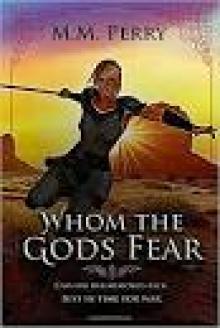 Gods & Mortals
Gods & Mortals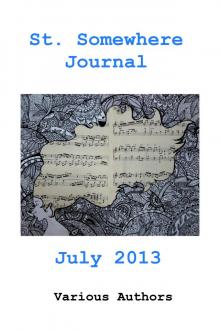 St. Somewhere Journal, July 2013
St. Somewhere Journal, July 2013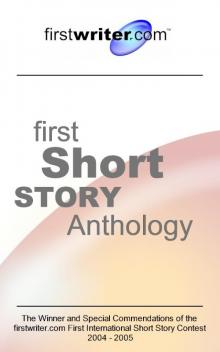 firstwriter.com First Short Story Anthology
firstwriter.com First Short Story Anthology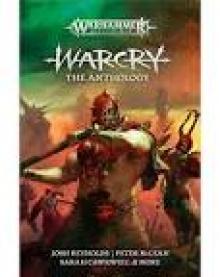 Warcry: The Anthology
Warcry: The Anthology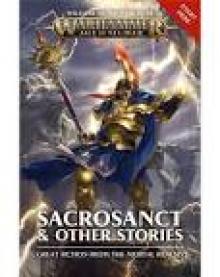 Sacrosanct & Other Stories
Sacrosanct & Other Stories Ultimate Heroes Collection
Ultimate Heroes Collection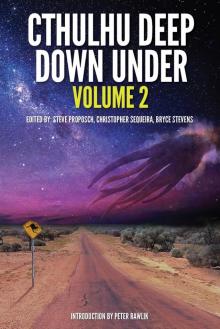 Cthulhu Deep Down Under Volume 2
Cthulhu Deep Down Under Volume 2 Erotic Classics II
Erotic Classics II Dynasties: The Elliotts, Books 1-6
Dynasties: The Elliotts, Books 1-6 Dynasties:The Elliots, Books 7-12
Dynasties:The Elliots, Books 7-12 International Speculative Fiction #4
International Speculative Fiction #4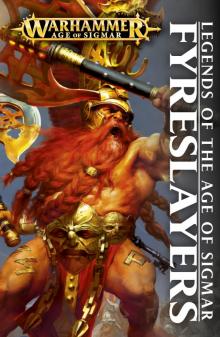 Fyreslayers
Fyreslayers One Night In Collection
One Night In Collection Mortal Crimes 2
Mortal Crimes 2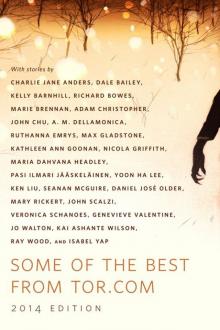 Some of the Best from Tor.com
Some of the Best from Tor.com Howl & Growl: A Paranormal Romance Boxed Set
Howl & Growl: A Paranormal Romance Boxed Set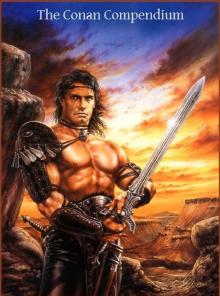 The Conan Compendium
The Conan Compendium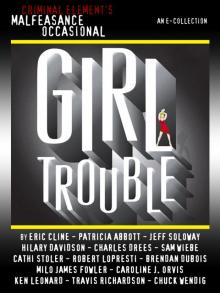 The Malfeasance Occasional
The Malfeasance Occasional Brides of Penhally Bay - Vol 4
Brides of Penhally Bay - Vol 4 Brides of Penhally Bay - Vol 2
Brides of Penhally Bay - Vol 2 Brides of Penhally Bay - Vol 1
Brides of Penhally Bay - Vol 1 School's in Session
School's in Session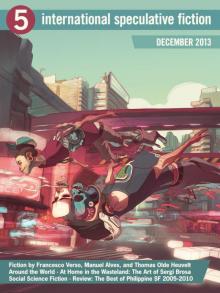 International Speculative Fiction #5
International Speculative Fiction #5 Erotic Classics I
Erotic Classics I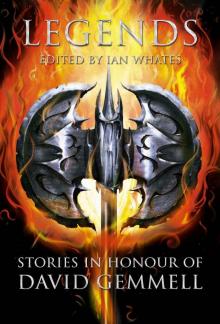 Legends: Stories in Honor of David Gemmell
Legends: Stories in Honor of David Gemmell Mortal Crimes 1
Mortal Crimes 1 The Classic Children's Literature Collection: 39 Classic Novels
The Classic Children's Literature Collection: 39 Classic Novels Don't Read in the Closet volume one
Don't Read in the Closet volume one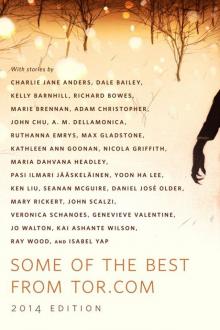 Some of the Best from Tor.com: 2014: A Tor.Com Original
Some of the Best from Tor.com: 2014: A Tor.Com Original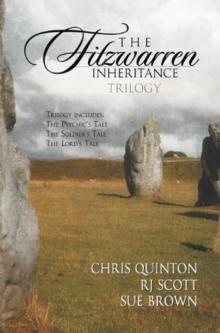 The Fitzwarren Inheritance
The Fitzwarren Inheritance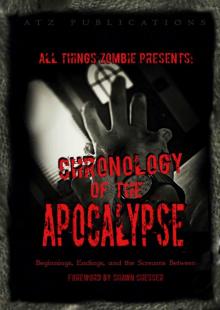 All Things Zombie: Chronology of the Apocalypse
All Things Zombie: Chronology of the Apocalypse Hammer and Bolter - Issue 12
Hammer and Bolter - Issue 12 Kiss Kiss
Kiss Kiss Dog Stories
Dog Stories Bad Blood Collection
Bad Blood Collection